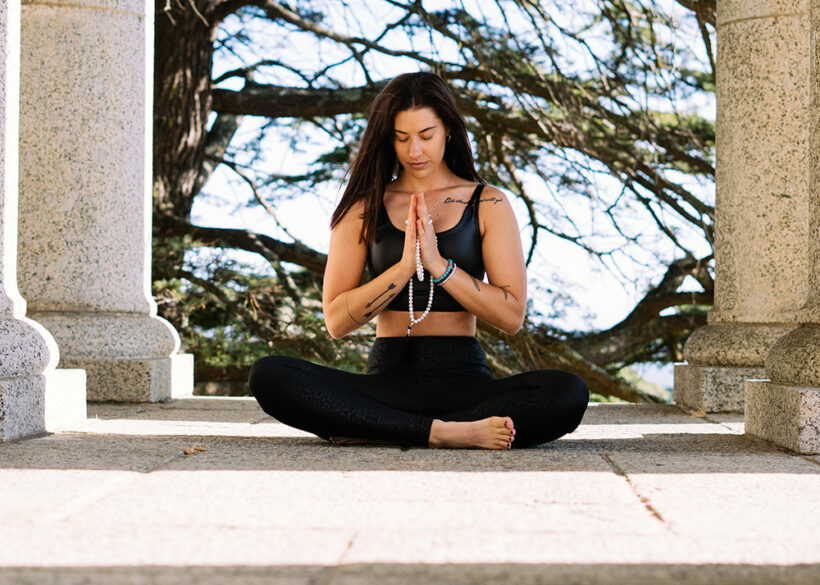How to Sit for Meditation (Best Meditation Postures)
If you imagine someone meditating in your mind, you’re probably picturing someone sitting on the floor with their knees bent and ankles crossed. But there are many other ways to sit for meditation and your practice doesn’t rely on you using a specific meditation posture. At any moment you can pause and meditate–some people even meditate while walking or laying down. But if you want to meditate for long periods of time, you will need to find a comfortable position with proper posture.
In this article, we’ll cover a variety of common meditation positions as well as modifications and props you can use to enhance your practice. Try out a few, you may find you enjoy many of these meditation postures. Once you know how to sit for meditation, you’ll be free to focus your energy on mindfulness.

Points to Remember for Proper Meditation Posture
No matter what sitting position you choose, keep these key points in mind to make sure you’re sitting with proper posture and alignment.
Spine
Spinal alignment is the most important point to pay attention to while meditating. Our modern society often has us rounding forward in our spine while we’re sitting at a desk or behind the steering wheel of a car. For proper posture, you want to sit up straight following the natural curves of your spine. Your spine doesn’t need to be rigidly straight, just keep yourself lifted as if there is a balloon tied to the top of your head pulling your body upward.
If you don’t frequently do yoga or sit on the floor, it may be tricky to hold your spine in this posture for very long. You can build up your stamina over time or use a chair with back support.
Shoulders
While maintaining your straight spine, you want to relax your shoulders down your back. This will open up your chest, helping you to relax and avoid tension in the shoulders while you meditate.
Chin
Make sure your chin is slightly tucked. This elongates the spine through the back of your neck. Keep your jaw relaxed to avoid extra tension.
Hands
The only rule for your hands is to let them rest somewhere comfortably so they won’t be a distraction. Many people enjoy using hand mudras, which are traditional hand positions that have symbolic meanings, to enhance their practices.
As a beginner, simply resting your hands on your knees or thighs is an easy option. You can also rest one hand on top of the other in your lap.
Common Meditation Postures
These sitting postures are the most common ones used for meditation. Any of these are a great choice for meditating because they promote proper posture and spinal alignment. You may want to try a few until you find one that is comfortable for you to sit in for long periods of time. If you’re new to meditation and still building your practice you may need to incorporate meditation cushions, benches, or chairs to help you (more on this in the next section).
Easy Position
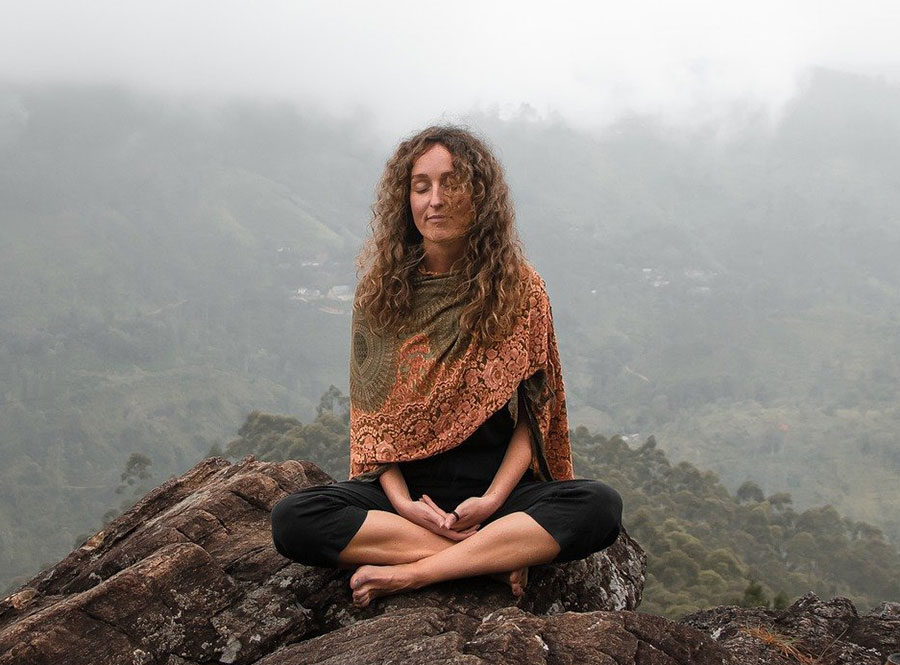
More commonly called “cross legged,” Easy Position is similar to the criss-cross applesauce sitting you did in elementary school. I recommend this for people who don’t have a lot of yoga experience and don’t frequently sit on the floor.
Sit on the floor and cross your ankles in front of you. It’s that easy! Rest your hands on your thighs or knees, or stack them gently on your lap.
Quarter Lotus

A variation on full Lotus, this is a great option for new meditators as it requires less flexibility than the full expression of Lotus.
To come into Quarter lotus, sit on the floor and bend the legs at the knees. Bring the ankles in to cross, stacking one ankle on top of the other calf.
Many people have difficulty sitting up straight and avoiding rounding the lower back, especially if they’re not used to sitting in this position. To help support proper posture you can sit on a folded blanket or a cushion to help lift the hips and tilt the pelvis forward.
Half Lotus

If Quater Lotus is easy for you, consider trying Half Lotus for your next meditation.
You will begin seated on the floor cross-legged. Bring one foot up to rest on the opposite leg. You must be flexible enough to bring your foot up to the thigh. Do not rest your foot on your knee as this can put pressure on the joint.
Full Lotus
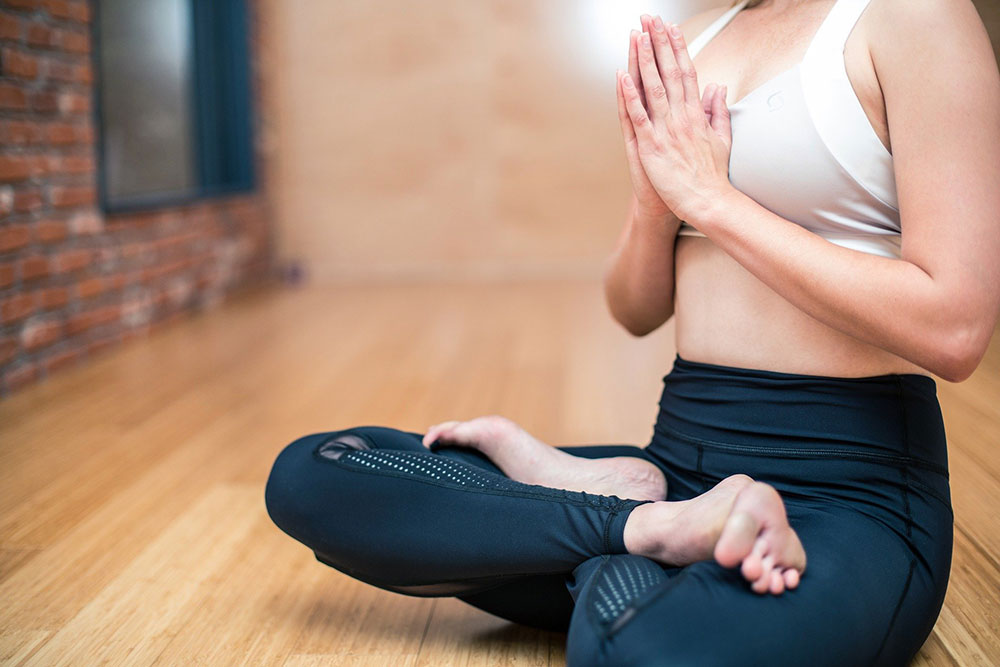
Full Lotus is a position that requires you to be flexible and open in the hips so it’s usually not accessible to beginners.
Sitting cross-legged on the floor, you will bring each foot on top of the opposite thigh.
This is considered the most stable meditation position because it is very symmetrical. Do not attempt Full Lotus if you have knee or hip conditions that make the pose painful. You may need to practice hip-opening yoga poses before you can take this sitting position.
Burmese Position

If you’re flexible enough for your knees to relax onto the ground, Burmese position is a great alternative to Full Lotus. It is more stable than a crossed-leg position.
Come into a cross-legged position on the floor and bring one ankle in front of the other. The ankles should rest on the ground in front of the pelvis. Both knees should rest on the ground. Sitting on a cushion will make this pose more accessible.
Seiza Kneeling Pose
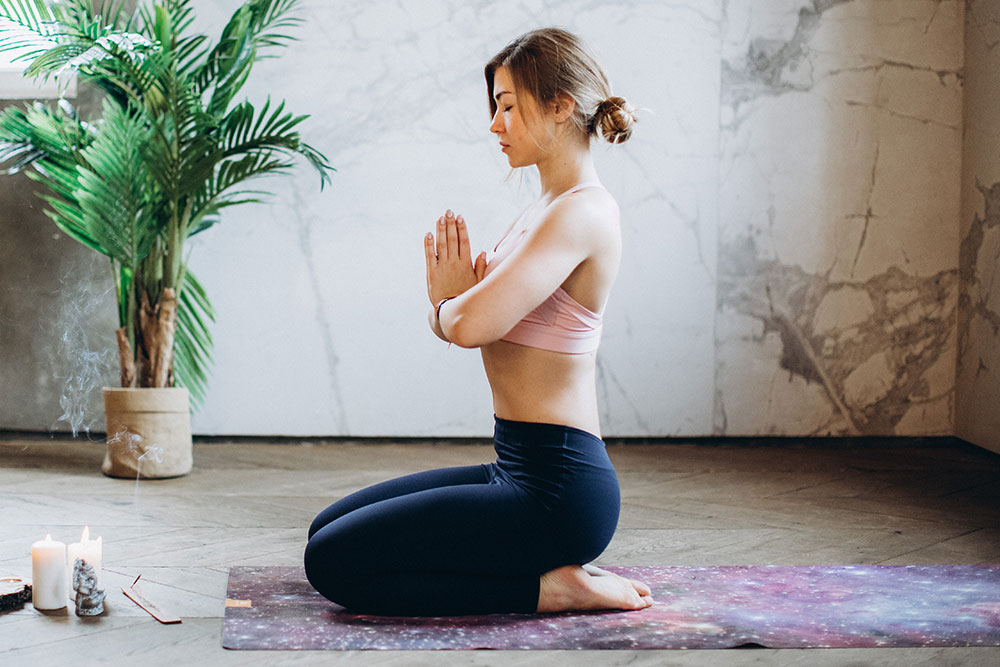
The traditional way of sitting in Japan, Seiza is also a popular kneeling meditation position. This pose is best done with a meditation bench to relieve pressure on the knees and legs. A zabuton or other soft cushioning under the legs also makes this position much more comfortable.
Sitting Meditation Variations and Props
Meditating in a Chair
If getting down on the ground isn’t an option for you, use a chair for your meditation practice. You can select any chair in your home that allows you to place your feet flat on the floor. Avoid rolling chairs like desk chairs.
Sit on the chair with both feet flat on the floor. Maintain a long spine by sitting up tall. You can lean against the chair for more support but make sure not to round through the lower back. Relax your shoulds and rest your hands on your thighs.
Meditating Against a Wall
If you want to sit on the floor to meditate but still need some back support, an easy solution is to meditate by sitting against a wall. You can do this in Easy Pose with your legs crossed or send your legs straight out in front of you. Make sure you’re not rounding in the lower back.
Use a Meditation Chair
If you want to move your meditation practice to the floor, there are chairs specifically designed to support meditation. meditation chairs with back support can help you maintain a sitting position for longer, while also cushioning your bottom and legs.
If you have issues holding a proper position while meditating, you can try ergonomic meditation chairs to better support your body and promote proper alignment.
Use a Meditation Bench
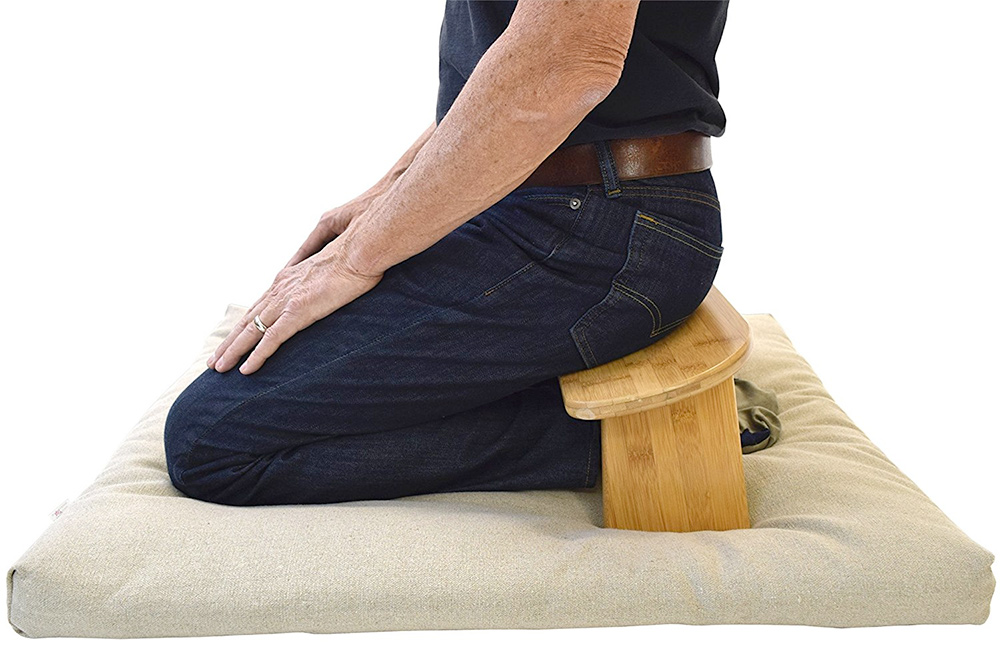
If you prefer a kneeling meditation a seiza meditation bench makes the pose more comfortable. Sitting on the bench takes pressure off your legs and makes the position more comfortable so you can meditate longer. Many meditators pair a bench with a zabuton mat to provide comfort to the knees and shins.
Learn how to use a meditation bench.
Use a Meditation Cushion
Meditation cushions are a very popular option to add comfort to a sitting meditation pose. There are two types of meditation cushions. A zafu is a round or cresent shaped pillow that you sit on. A zabuton mat goes on the floor to cushion your legs and knees. People frequently buy them in cushion sets.
Zafu cushions are great to help you tilt your pelvis and maintain a proper curve in your spine while sitting in cross-legged meditation poses. You can even use a round zafu for a kneeling meditation position.
New to meditation? Learn how to start a meditation practice. Follow these meditation tips and techniques for beginners. Check out these meditation books for beginners and watch these meditation videos for beginners.
